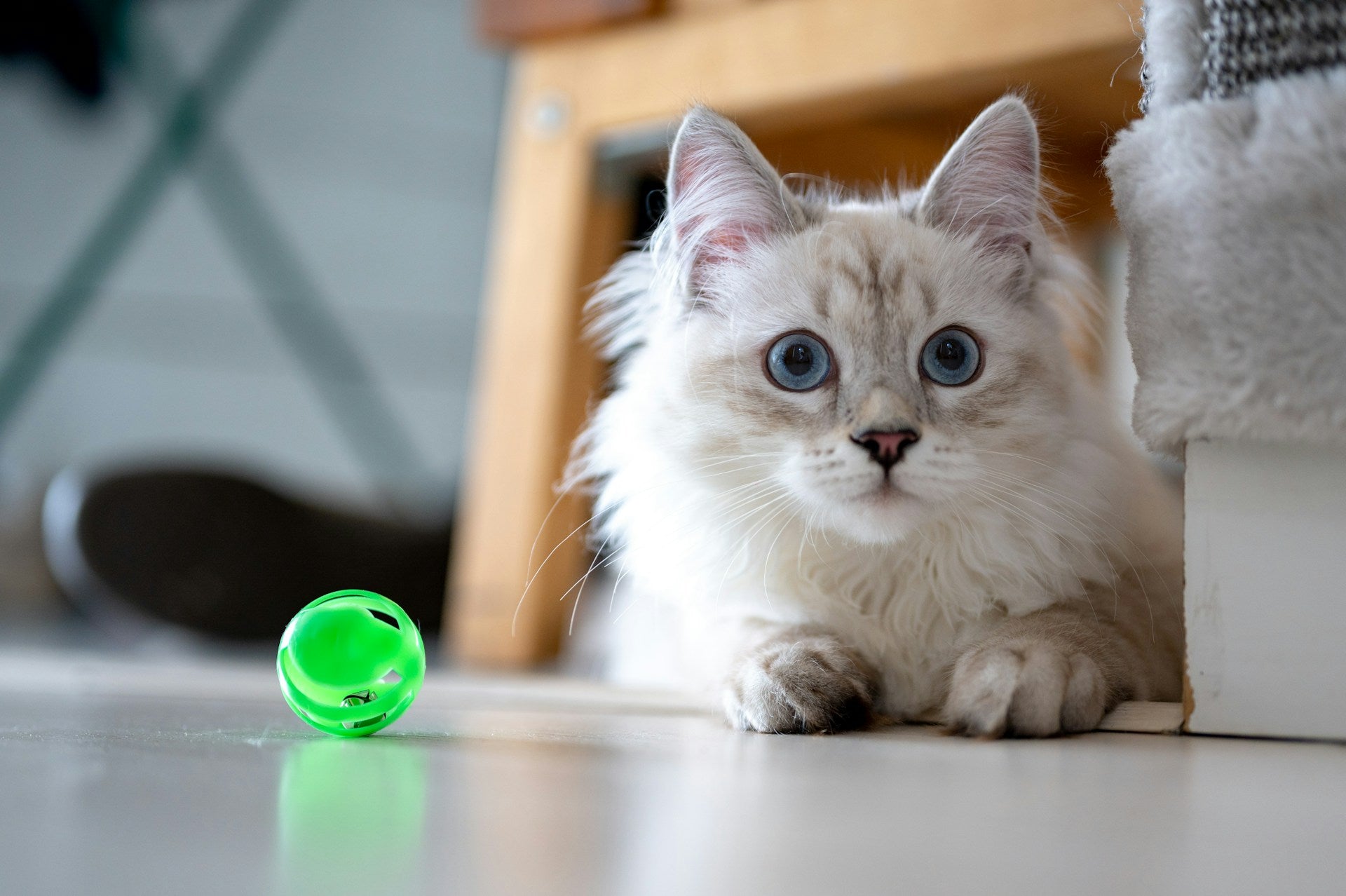
Training a cat to play fetch can be a fun and rewarding experience for both the cat and their owner. This interactive activity provides an enriching experience that strengthens your bond and provides both mental and physical stimulation for your cat.
Successful training requires patience, consistency, and understanding of feline behavior. We've put together a step-by-step guide:
Understand Your Cat's Personality and Preferences
Cats, like humans, have unique personalities and preferences. Some may naturally be more inclined to play fetch, while others may need more encouragement. Understanding your cat's personality will help tailor your training approach to suit their needs. Knowing what toys your cat prefers will help you make the right choices for training.
Choose the Right Equipment
Select appropriate toys for fetch. Consider how your cat plays with different cat toy types. Most cats prefer lightweight toys that are easy to carry in their mouths. Soft balls, crumpled paper, or small plush toys are good options. Avoid toys with small parts that could be swallowed.
Create a Positive Association
Start by associating the fetch toy with positive experiences. Let your cat sniff and explore the toy. You can also rub it with catnip to make it more enticing. This helps your cat establish a positive connection with the toy.
Introduce the Fetch Game
Begin by tossing the toy a short distance in front of your cat. Encourage them to investigate the toy by using a happy, excited tone of voice. You can also use treats or a favorite food as a reward when they interact with the toy.
Encourage Retrieval
Once your cat shows interest in the toy, encourage them to pick it up. You can do this by gently tapping the toy or dragging it along the ground to simulate movement. Reward your cat with praise and treats when they interact with the toy.
Teach the Release Command
As your cat becomes more comfortable with picking up the toy, introduce a release command such as "drop it" or "release." Use this command consistently whenever your cat brings the toy back to you.Gradually
Increase Distance: Start by tossing the toy short distances, and gradually increase the distance as your cat becomes more proficient. Be patient and allow your cat to progress at their own pace.
Use Positive Reinforcement
Positive reinforcement is key to training any animal. Whenever your cat successfully retrieves the toy, praise them enthusiastically and offer a treat as a reward. This reinforces the desired behavior and encourages them to continue playing fetch.
Keep Sessions Short and Fun
Cats have short attention spans, so keep training sessions brief and enjoyable. Aim for several short sessions throughout the day rather than one long session. End each session on a positive note to keep your cat engaged and eager to participate.
Be Patient and Consistent
Training a cat takes time and patience. Some cats may pick up fetch quickly, while others may take longer to learn. Stay consistent with your training methods and be patient with your cat's progress.
Avoid Punishment
Never punish your cat for not understanding or obeying commands. This can create fear and anxiety, making it harder to train them. Instead, focus on positive reinforcement and reward good behavior.
Make Fetch Interactive
Keep the fetch game interactive by varying the distance and direction of your throws. This keeps your cat engaged and prevents boredom. You can also incorporate obstacles or hiding spots to make the game more challenging and stimulating.
Practice Regularly
Like any skill, playing fetch requires practice to maintain proficiency. Some cats fetch instinctively as kittens but forget the behavior if not encouraged as they grow. Set aside time each day to play fetch with your cat, even if it's just for a few minutes. Consistent practice strengthens the bond between you and your cat and reinforces the fetch behavior.
Be Patient with Setbacks
It's normal for your cat to experience setbacks or regressions during training. If your cat loses interest or becomes frustrated, take a break and try again later. Remain patient and positive, and continue to reinforce good behavior.
Celebrate Progress
Celebrate your cat's progress, no matter how small. Each successful fetch is a milestone worth celebrating. By acknowledging your cat's achievements, you reinforce their confidence and motivation to continue playing fetch.
By following these steps and keeping the training fun for your pet, you can successfully train your cat to play fetch and enjoy hours of fun and bonding together. Training your cat to fetch is not always easy and requires a step by step approach, ensuring encouragement at every step until the behavior is learned. Remember to be patient, consistent, and always prioritize your cat's comfort and well-being throughout the training process.

Comments (0)
Back to Noots Cat Blog